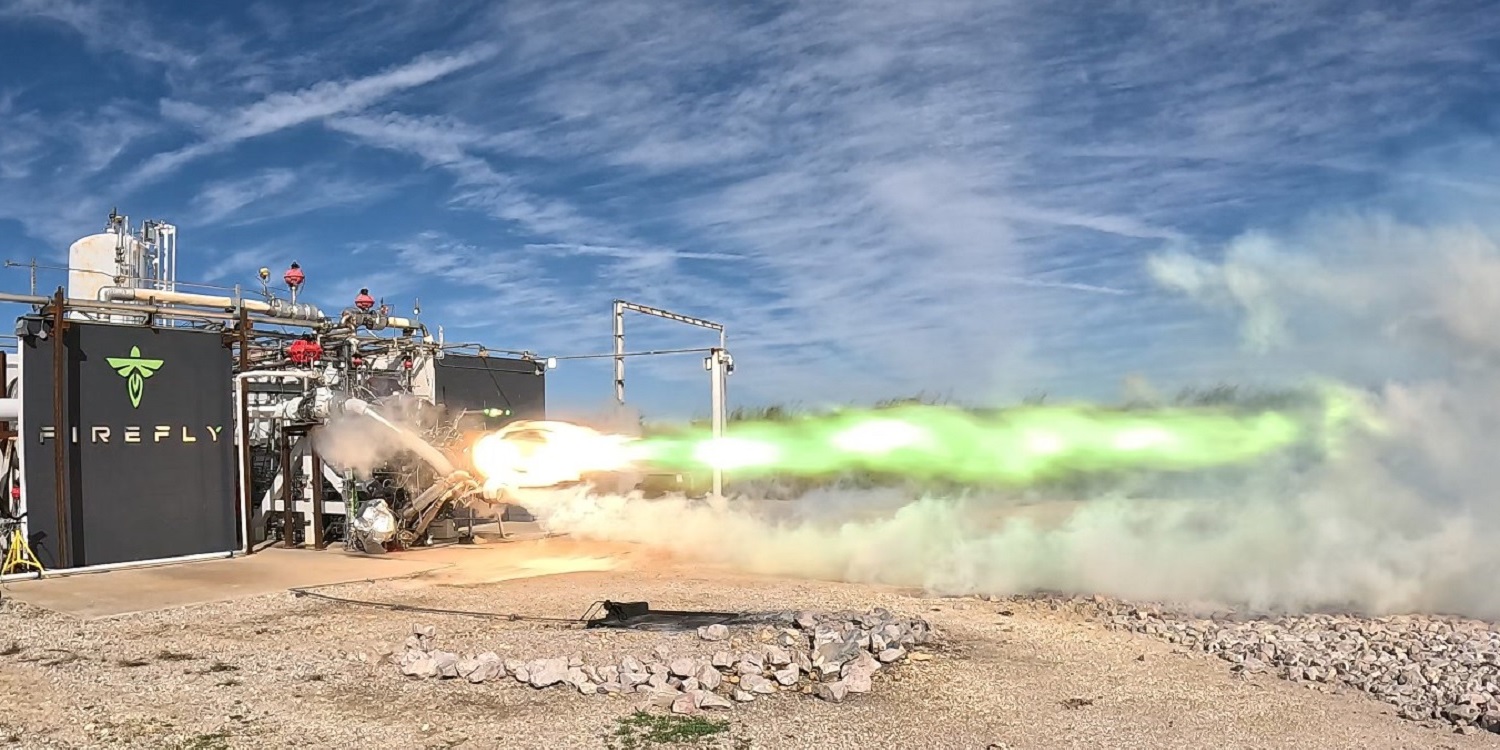
VANDENBERG SPACE FORCE BASE, Calif., June 21, 2024 – Firefly Aerospace, Inc., an end-to-end space transportation company, today announced its Alpha Flight 5 (FLTA005) mission, called Noise of Summer, is scheduled to launch no earlier than June 26. The 30-minute launch window will open at 9 p.m. PST.
“The Firefly team has rapidly matured our Alpha rocket and our responsive launch operations to deliver the dependable one-metric-ton rocket the market is demanding,” said Bill Weber, CEO of Firefly Aerospace. “We’re proud to support this NASA mission that will not only prove out the capabilities of Alpha as a repeatable, reliable launch vehicle, but also advance our mission of making space for everyone by supporting some incredible student-led CubeSat initiatives.”
Launching from Firefly’s SLC-2 complex at the Vandenberg Space Force Base, Alpha FLTA005 supports Firefly’s Venture-Class Launch Services Demo 2 contract with NASA that serves to validate the capabilities of launch vehicles that support a new launch class and provide more access to space for small satellites and spacecraft. The mission will deploy the following eight payloads selected through NASA’s CubeSat Launch Initiative, providing U.S. educational institutions and nonprofits with low-cost access to space.
- CatSat – University of Arizona: CatSat is a technology demonstration of an inflatable antenna for high-speed communications. After reaching low Earth orbit, CatSat’s antenna will deploy and inflate to a diameter of just over one-and-a-half feet to transmit high-definition Earth photos to X-band ground stations at approximately 50 megabits per second, more than 5 times faster than typical home internet speeds.
- KUbeSat-1 - University of Kansas: KUbeSat-1 will demonstrate a new method to measure the energy and species of primary cosmic rays hitting Earth utilizing a Cosmic Ray Detector. The payload will also utilize High-Altitude Calibration technology to research very high frequency signals generated by cosmic ray interactions with the atmosphere.
- MESAT1 – University of Maine: MESAT1 is a climate focused payload that will identify urban heat islands, determine concentration of phytoplankton in water bodies, and help predict harmful algal blooms. Four multispectral cameras on board will relay the data down to University of Maine’s ground station for further processing.
- R5-S4 and R5-S2-2.0 – NASA’s Johnson Space Center: R5-S4 and R5-S2 will be the first in a line of R5 spacecrafts launched to orbit, featuring Rendezvous and Proximity Operations Fiducial AprilTags to solve the problem of relative navigation between spacecraft. R5-S4 will also demonstrate a “spacecraft license plate” with a small blinking light that continuously flashes a unique number that can be read with a small telescope on the ground to identify and better track satellites among tens of thousands of objects currently in orbit.
- Serenity 3 – Teachers in Space: Licensed as an amateur radio broadcaster, Serenity 3 includes a suite of data sensors and a camera that will send data back to Earth and communicate with radios on the ground, allowing anyone with a ham radio to “talk” to Serenity.
- SOC-i – University of Washington: Satellite for Optimal Control and Imaging (SOC-i) will test an algorithm aimed at supporting autonomous operations with constrained attitude guidance maneuvers computed in real-time aboard the spacecraft. The payload utilizes uses optimization-based attitude guidance methods to compute trajectories in real-time that meet a set of five constraints throughout the maneuvers.
- TechEdSat-11 (TES-11) – NASA Ames Research Center: TES-11 will conduct several technology demonstrations, including an exo-brake with a deployable parachute-like device aimed at reducing CubeSat de-orbit times, and BrainStack-3, a graphics processing unit and neuromorphic processors that allow for artificial intelligence experiments in low Earth orbit. TES-11 is part of a series of collaborative missions called TechEdSat that pair university students with NASA researchers to evaluate new technologies for use in small satellites while providing student mentorship opportunities with engineers at NASA’s Ames Research Center.
“Through innovative technology partnerships, NASA provides these CubeSat developers a low-cost pathway to conduct scientific investigations and technology demonstrations in space,” said Hamilton Fernandez, mission manager with NASA’s Launch Services Program. “NASA benefits by having a mechanism for low-cost technology development and scientific research to help bridge strategic knowledge gaps and accelerate flight-qualified technology. The students benefit through hands on experience, which develops the future workforce of the U.S. space industry.”
Alpha FLTA005 and Firefly’s future Alpha launches will continue to be performed as responsive space operations that are observed by members of the U.S. Space Force Tactically Responsive Space team to further define the training, infrastructure, and operational requirements for repeatable, on-demand launch capabilities. During the final launch operations, Firefly will transport the payload fairing to the launch pad and mate it to Firefly’s Alpha rocket within hours of the scheduled liftoff, compared to weeks in a typical operation.
About Firefly Aerospace
Firefly Aerospace is an end-to-end space transportation company with launch, lunar, and on-orbit services. Headquartered in central Texas, Firefly is a portfolio company of AE Industrial Partners (“AEI”) focused on delivering responsive, reliable, and affordable space access for government and commercial customers. Firefly’s small- to medium-lift launch vehicles, lunar landers, and orbital vehicles provide the space industry with a single source for missions from low Earth orbit to the surface of the Moon and beyond.Source: Firefly Aerospace



